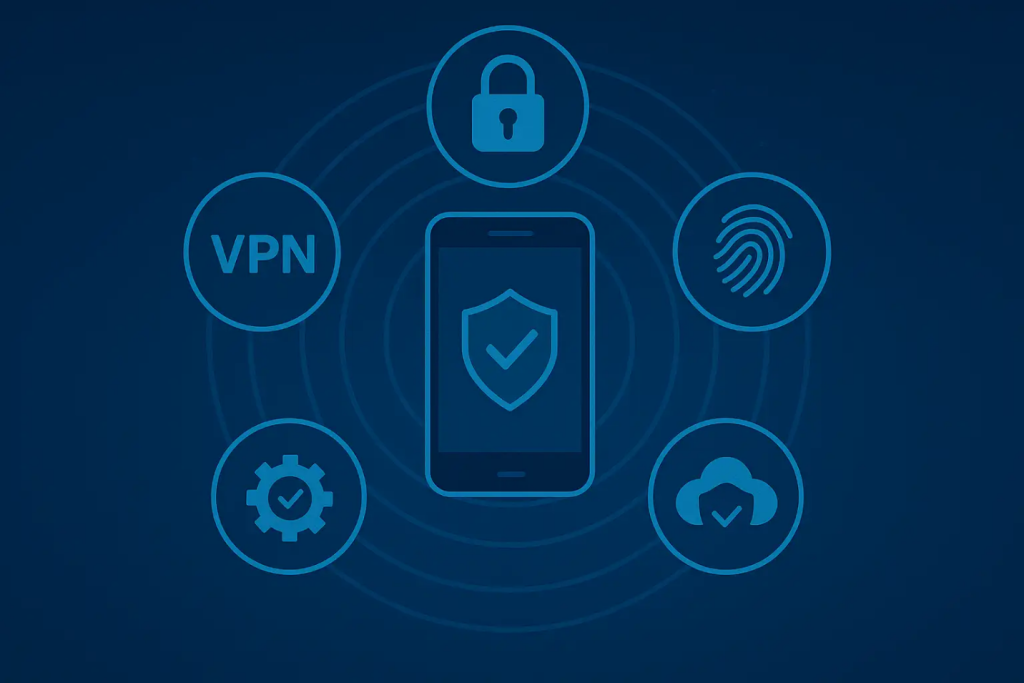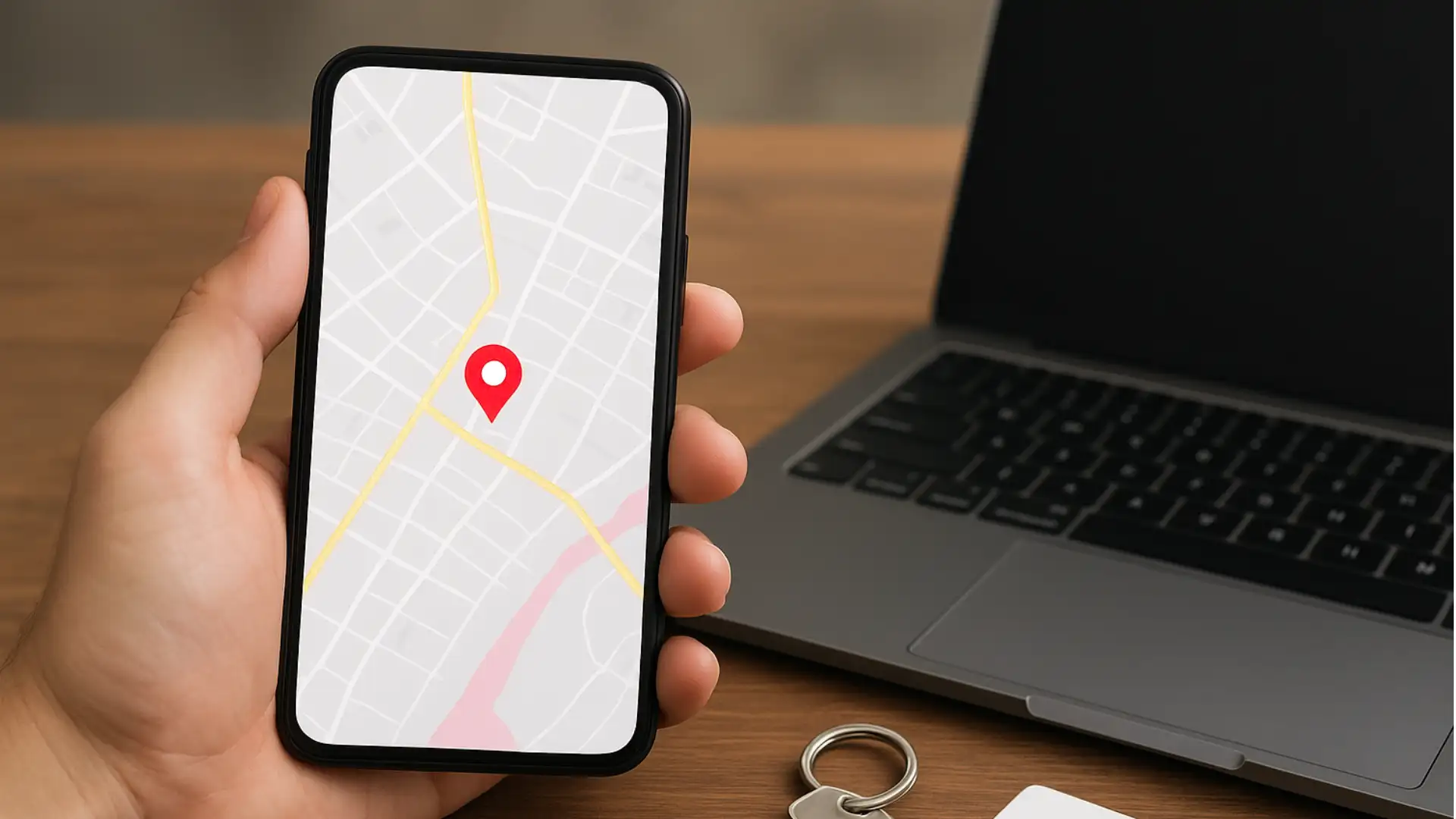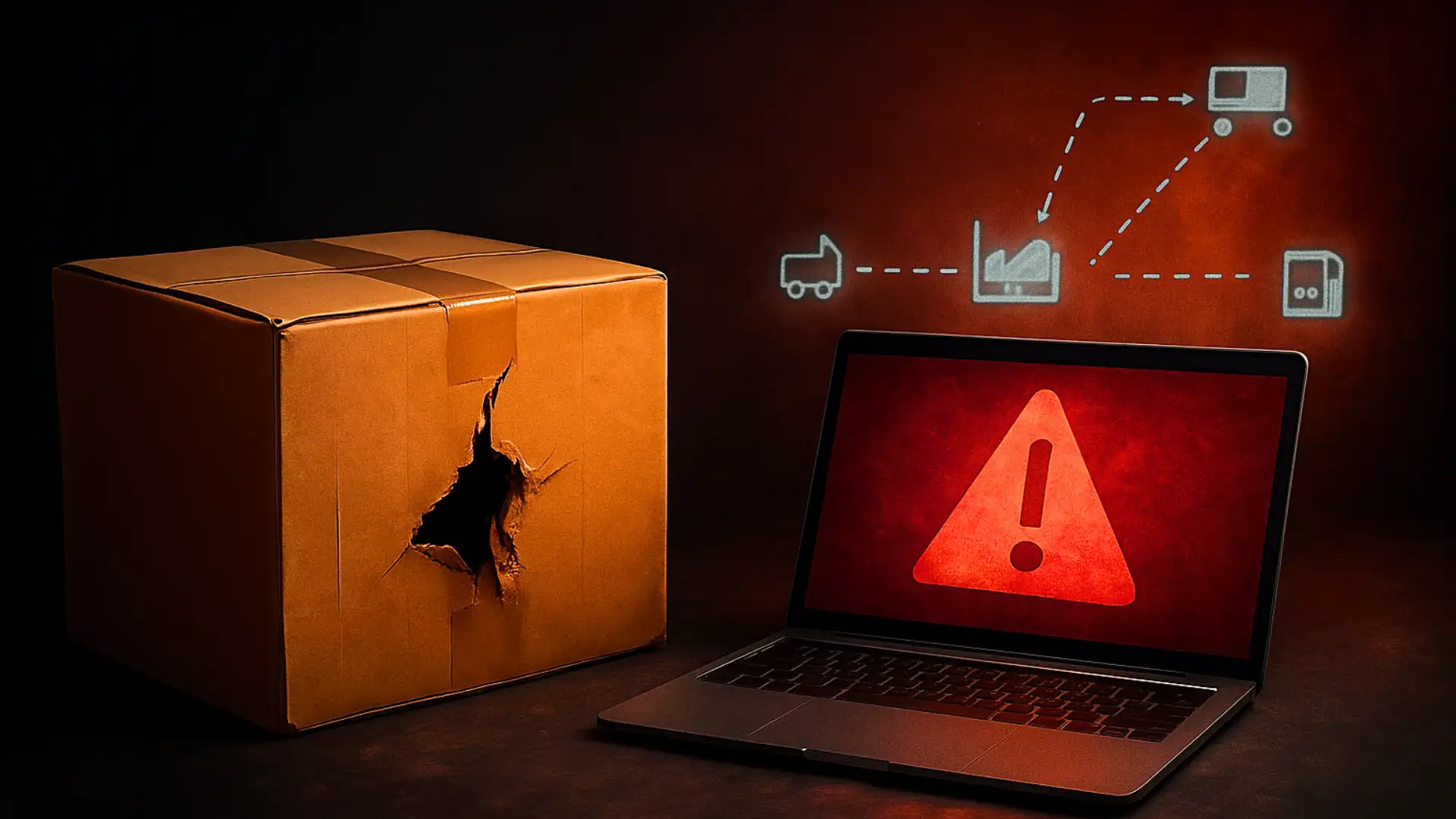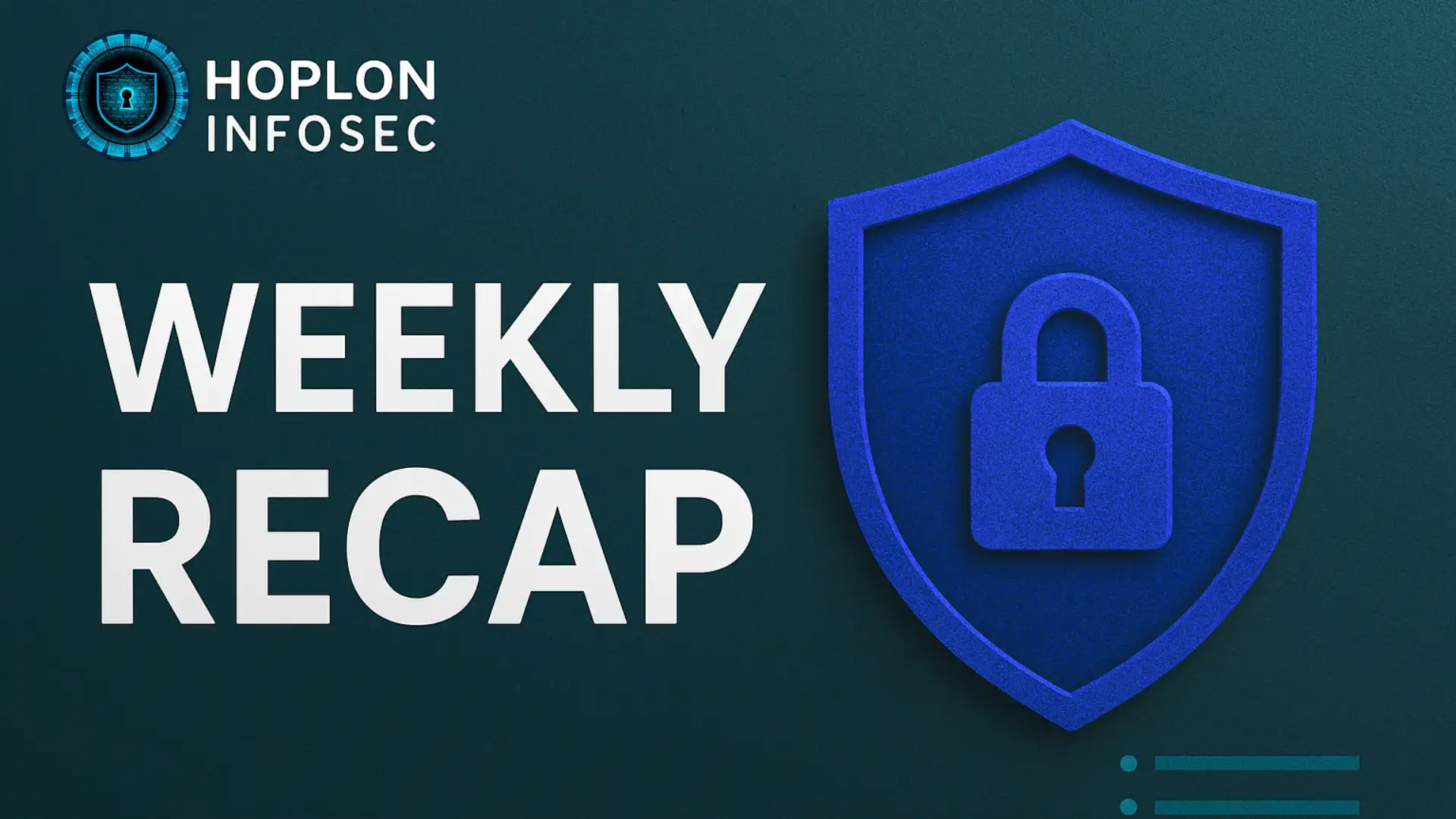Introduction to mobile Security
Mobile cybersecurity refers to the measures, practices, and technologies aimed at securing mobile devices such as smartphones, tablets, and laptops from cyber threats. As mobile devices become increasingly integral to both personal and professional life, the need to protect them has grown significantly. These devices are no longer just communication tools; they serve as personal vaults, business tools, and gateways to cloud-based services and sensitive data.
Unlike traditional computing systems, mobile devices operate in more open and variable environments. They connect to multiple networks, interact with countless applications, and are often carried across public and private spaces, making them especially vulnerable to a variety of cyber threats. Mobile cybersecurity ensures the protection of the entire mobile ecosystem; this includes the device hardware, the operating system, the applications installed, the networks it connects to, and the user behaviours it encounters.
The Expanding Attack Surface
Mobile devices introduce unique security challenges. Their portability makes them simple to lose or steal. They regularly connect to unsecured networks like public Wi-Fi, increasing the risk of interception. Furthermore, it’s common for mobile applications to request broad permissions, which are vulnerable to exploits. As a result, mobile cybersecurity is not merely about antivirus software; it involves a combination of encryption, access controls, application security, network monitoring, and user awareness training.
Why Mobile Cybersecurity Becomes Front and Centre

Protecting Sensitive Data
One of the most critical advantages of mobile cybersecurity is the ability to safeguard sensitive information stored or accessed on mobile devices. Whether it’s a personal banking app, health tracker, or business email, these devices are repositories of valuable data. Security measures such as data encryption and remote wiping capabilities help ensure that if a device is compromised, its data does not fall into the wrong hands.
Preventing Financial and Operational Loss
Cyberattacks targeting mobile platforms can result in financial loss through theft, fraud, or ransomware. For businesses, the repercussions can be even more damaging, including legal liabilities, downtime, and lost revenue. Effective mobile cybersecurity reduces these risks by proactively defending against malicious activity and swiftly responding to incidents when they occur.
Ensuring Regulatory Compliance
Industries like finance, healthcare, and government are subject to stringent data protection laws. Regulations such as the General Data Protection Regulation (GDPR), the Health Insurance Portability and Accountability Act (HIPAA), and other privacy laws mandate strict data handling procedures. Mobile cybersecurity solutions enable organisations to enforce these policies, monitor compliance, and produce audit-ready reports when required.
Supporting Remote and Hybrid Work
The modern workforce increasingly relies on mobile devices to access corporate resources remotely. Cybersecurity tools facilitate this trend by ensuring secure connections, enforcing access controls, and isolating corporate data from personal use. This approach enables businesses to offer flexible work arrangements without compromising security.
Building Trust and reputation.
For businesses, maintaining customer trust is essential. A mobile security breach can damage a brand’s reputation and erode consumer confidence. By investing in mobile cybersecurity, organisations demonstrate their commitment to protecting user data, which in turn strengthens their reputation and customer loyalty.
The Importance of Mobile Cybersecurity Threats

Ubiquity of Mobile Devices
Mobile devices have become indispensable. In many parts of the world, they are the primary computing devices used by individuals. From social media to banking and healthcare, these devices are embedded in daily life. As they grow in importance, so too does the need to protect them from exploitation.
Rise in Mobile Threats
Cybercriminals have adapted their tactics to target mobile platforms. The emergence of mobile-specific malware, phishing campaigns via SMS (smishing), malicious apps, and rogue Wi-Fi networks all contribute to an increasingly hostile environment. Threat actors recognise the value of mobile devices and the opportunity to exploit weak security practices.
Blurring of Personal and Professional Use
The Bring Your Own Device (BYOD) culture has led to a significant overlap between personal and corporate use of mobile devices. While this flexibility improves productivity, it also complicates cybersecurity efforts. An unsecured personal device can become a vector for breaching enterprise networks, making mobile cybersecurity essential in corporate IT strategies.
Reliance on the cloud and App Ecosystems
Mobile devices often function as access points to cloud-based services. These integrations provide convenience but also create dependencies on external security measures. Misconfigured cloud permissions, insecure APIs, or compromised apps can all lead to data leaks. Mobile cybersecurity ensures that these integrations remain secure and that access is tightly controlled.
Limited Security Awareness
Many users are unaware of the threats targeting their mobile devices. They may download apps from untrusted sources, ignore software updates, or connect to insecure networks. Mobile cybersecurity involves not just technology but also user education to promote safe behaviour and raise awareness of emerging threats.
Mobile Cybersecurity Examples

Mobile Device Management (MDM)
Mobile Device Management solutions form the foundation of mobile cybersecurity in organisational environments. MDM systems allow administrators to remotely configure settings, enforce security policies, manage app installations, and track devices. This ensures that all devices accessing corporate resources meet predefined security standards.
Mobile Threat Detection and Response
Modern cybersecurity platforms incorporate mobile threat defence capabilities. These systems analyse how devices behave, scan for malware, detect network threats, and identify phishing attempts in real-time. Machine learning models are increasingly used to flag abnormal behaviour and prevent unknown threats from compromising mobile devices.
Secure Application Use
Applications pose one of the greatest threats to mobile security. Malicious apps or poorly designed software can act as gateways for data theft. To mitigate this, mobile cybersecurity solutions include app vetting, sandboxing, and runtime analysis. Secure app containers can isolate sensitive applications from the rest of the device, reducing the risk of cross-contamination.
Data Encryption and Isolation
Encryption ensures that, even if data is intercepted or accessed by unauthorised users, it remains unintelligible. Both data at rest and data in transit must be encrypted using strong algorithms. In enterprise scenarios, secure containers can isolate corporate data from personal data, making it easier to manage and wipe information in case of device loss or employee exit.
Identity and Access Management
Authentication is a vital component of mobile security. Passwords alone are no longer sufficient. Instead, multi-factor authentication (MFA) and biometric methods like fingerprint or facial recognition are used to validate users. Additionally, access to apps and data can be restricted based on context such as location, device compliance status, or time of day.
Patch and Update Management
Security vulnerabilities often stem from outdated software. Mobile cybersecurity systems help enforce timely updates by notifying users, blocking access for outdated devices, or automatically pushing updates when possible. This reduces the window of opportunity for attackers to exploit known flaws.
Network Protection
Public Wi-Fi networks present a significant risk for mobile users. Cybersecurity tools use VPNs, secure DNS services, and network firewalls to shield data from interception. Some solutions can automatically disconnect devices from untrusted networks or block access to known malicious sites.
Remote Lock and Data Wipe
If a device is lost or stolen, the ability to remotely lock it or wipe its contents becomes crucial. This feature guarantees that unauthorised individuals cannot access sensitive data, thereby preserving both.
Mobile Cybersecurity Threats and Prevention

Policy Configuration and Device Onboarding
The first step in mobile cybersecurity often involves onboarding devices through an MDM or EMM platform. During this phase, the device is configured with appropriate security settings, encryption is enabled, and restrictions on app usage or data sharing are applied. This stage ensures consistency across all devices within an organisation.
Continuous Monitoring and Behavioural Analysis
Once enrolled, devices are continuously monitored. Cybersecurity tools collect data on network activity, application behaviour, system logs, and user actions. This data is analysed in real time to detect suspicious behaviour, such as a user installing a blacklisted app or attempting to connect to an insecure network.
Automated Threat Detection and Response
When an anomaly is detected, the system may automatically respond by blocking access, alerting administrators, or initiating quarantine protocols. For example, if malware is detected, the device can be disconnected from the corporate network and a remote scan initiated. This procedure helps contain threats before they spread.
Authentication and Access Management
To access resources, users must authenticate through MFA or biometrics. Conditional access policies may also be applied, denying access if the device is jailbroken, operating in a risky location, or has outdated software. These layered access controls reduce the chances of unauthorised access, even if credentials are compromised.
Data Backup and Recovery
Mobile cybersecurity includes mechanisms for regular data backup. In case of ransomware or device failure, users can restore data from secure backups. This method ensures minimal disruption to productivity and protects against data loss.
User Awareness and Education
No cybersecurity strategy is complete without user training. Users must be educated about secure mobile behaviours, such as not clicking unknown links, keeping software updated, and avoiding suspicious downloads. Training programmes and simulations help reinforce good practices and reduce human error.
Conclusion
Mobile cybersecurity has transitioned from a secondary concern to a central component of modern digital defence strategies. As mobile devices take on more critical roles in our personal and professional lives, their exposure to cyber threats increases exponentially. From malware and phishing to data leaks and unauthorised access, the risk landscape is complex and ever-changing.
By understanding the components and functions of mobile cybersecurity, individuals and organisations can take proactive steps to protect their data and systems. The integration of MDM, threat detection, access control, encryption, and user education ensures a robust defence against evolving threats. In a world where mobility equals productivity, securing mobile platforms is no longer optional; it is a necessity for digital survival and growth.




